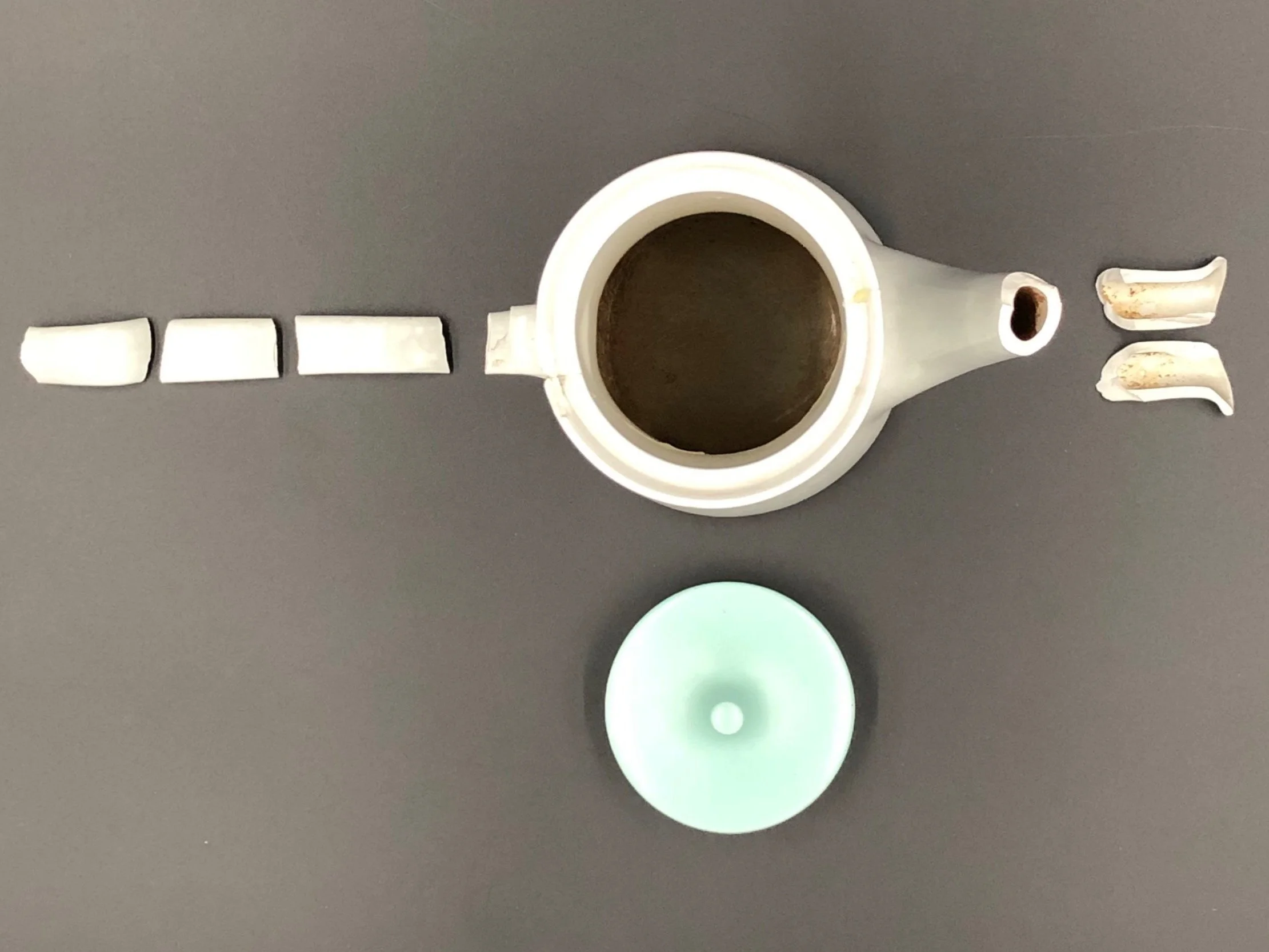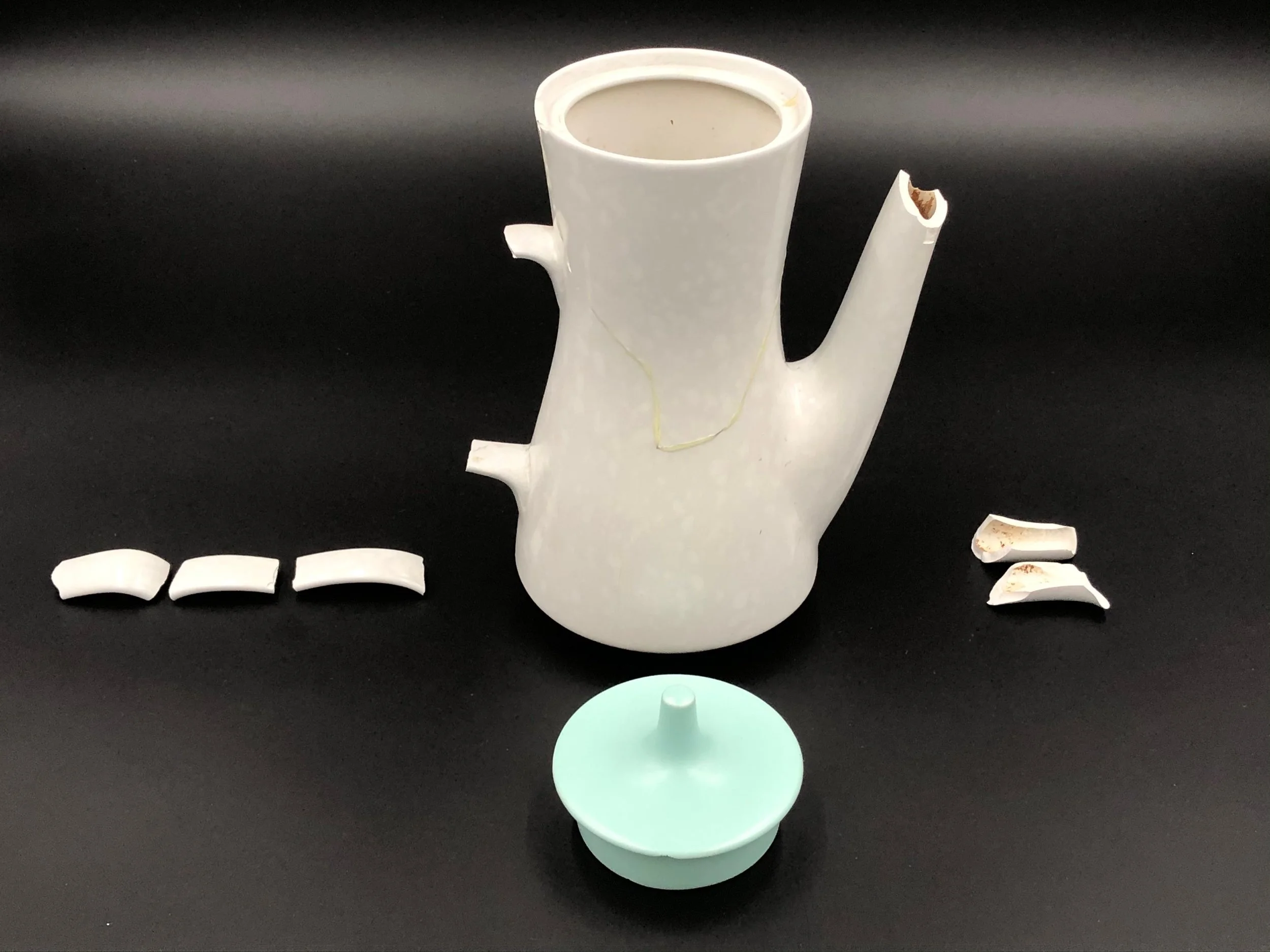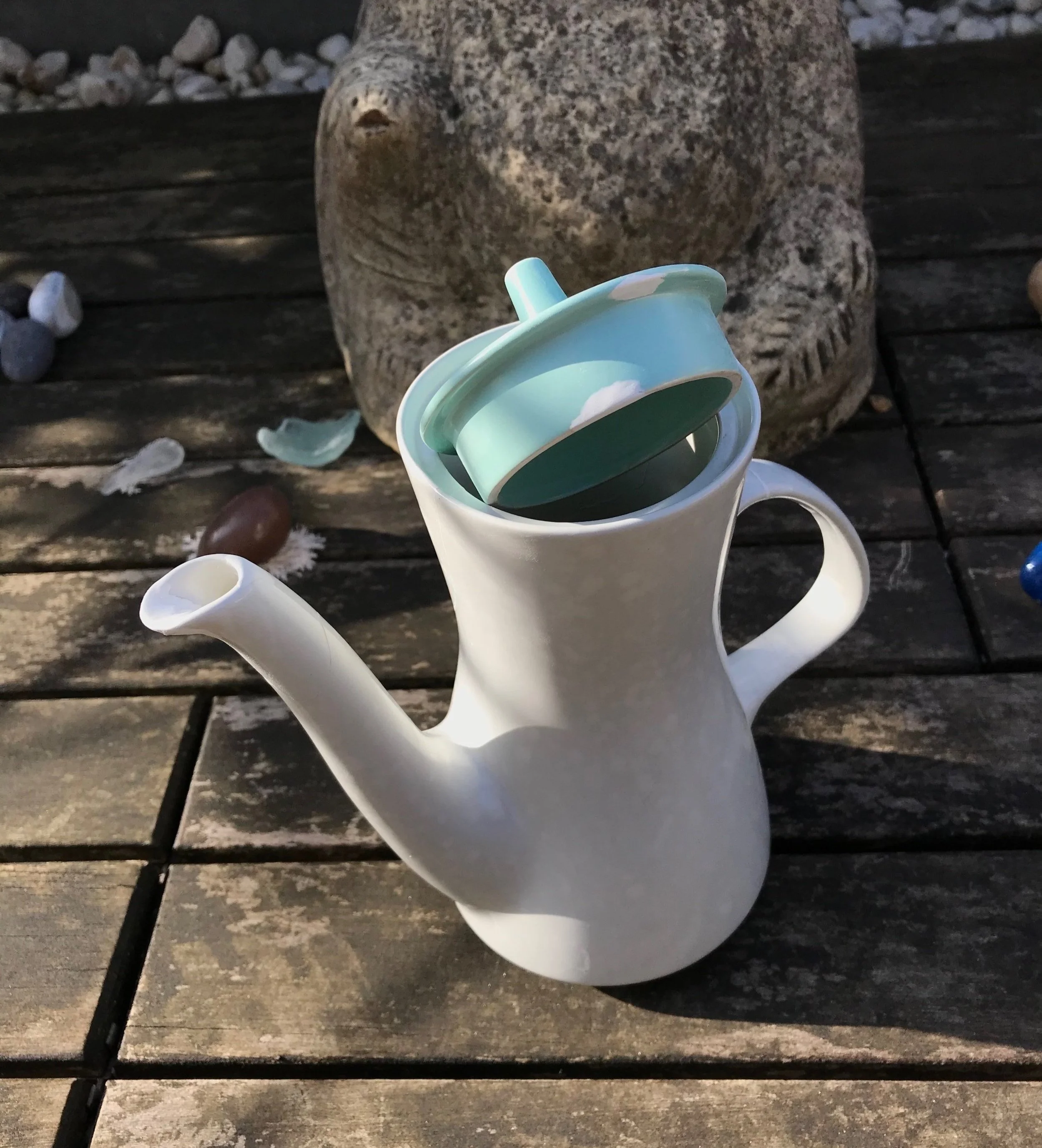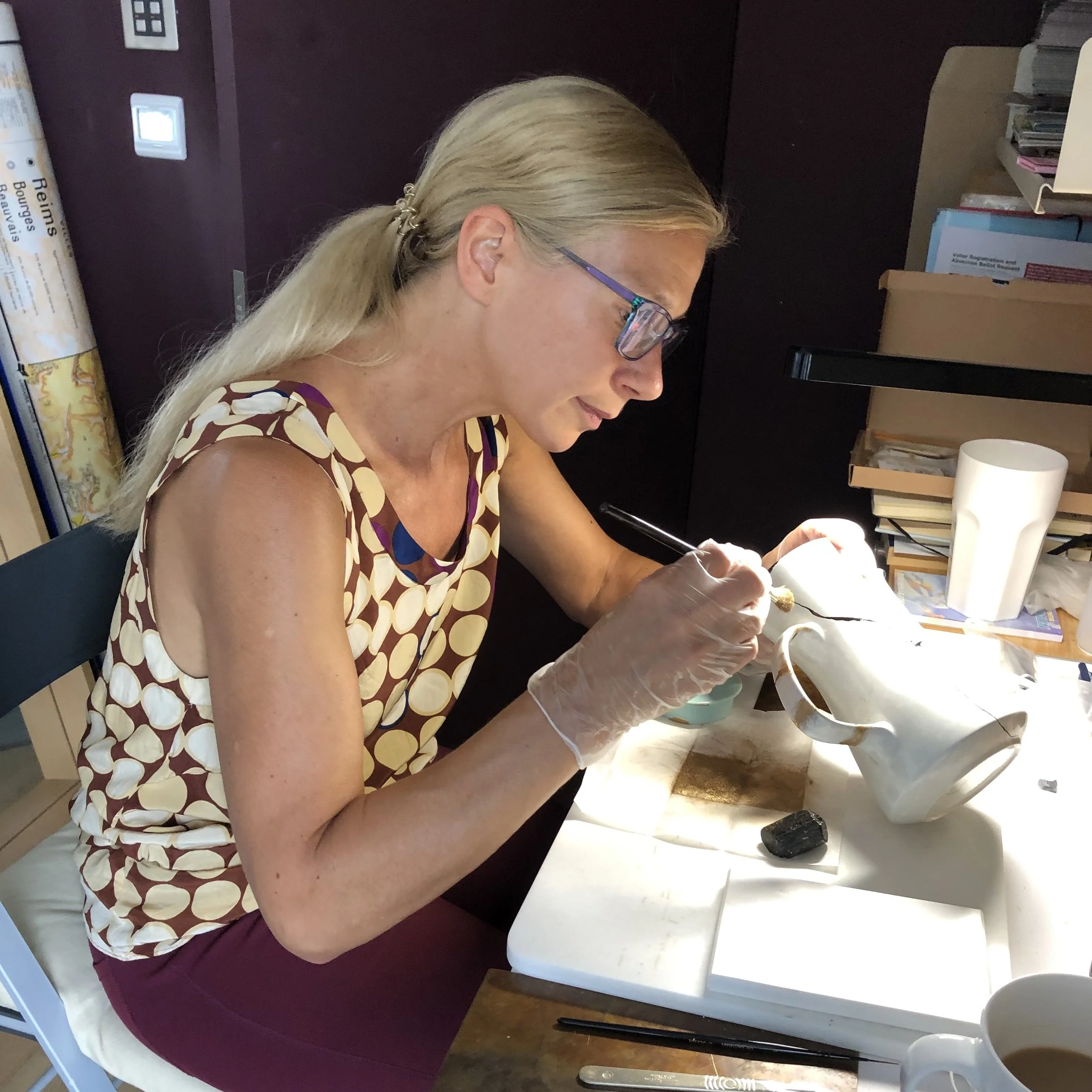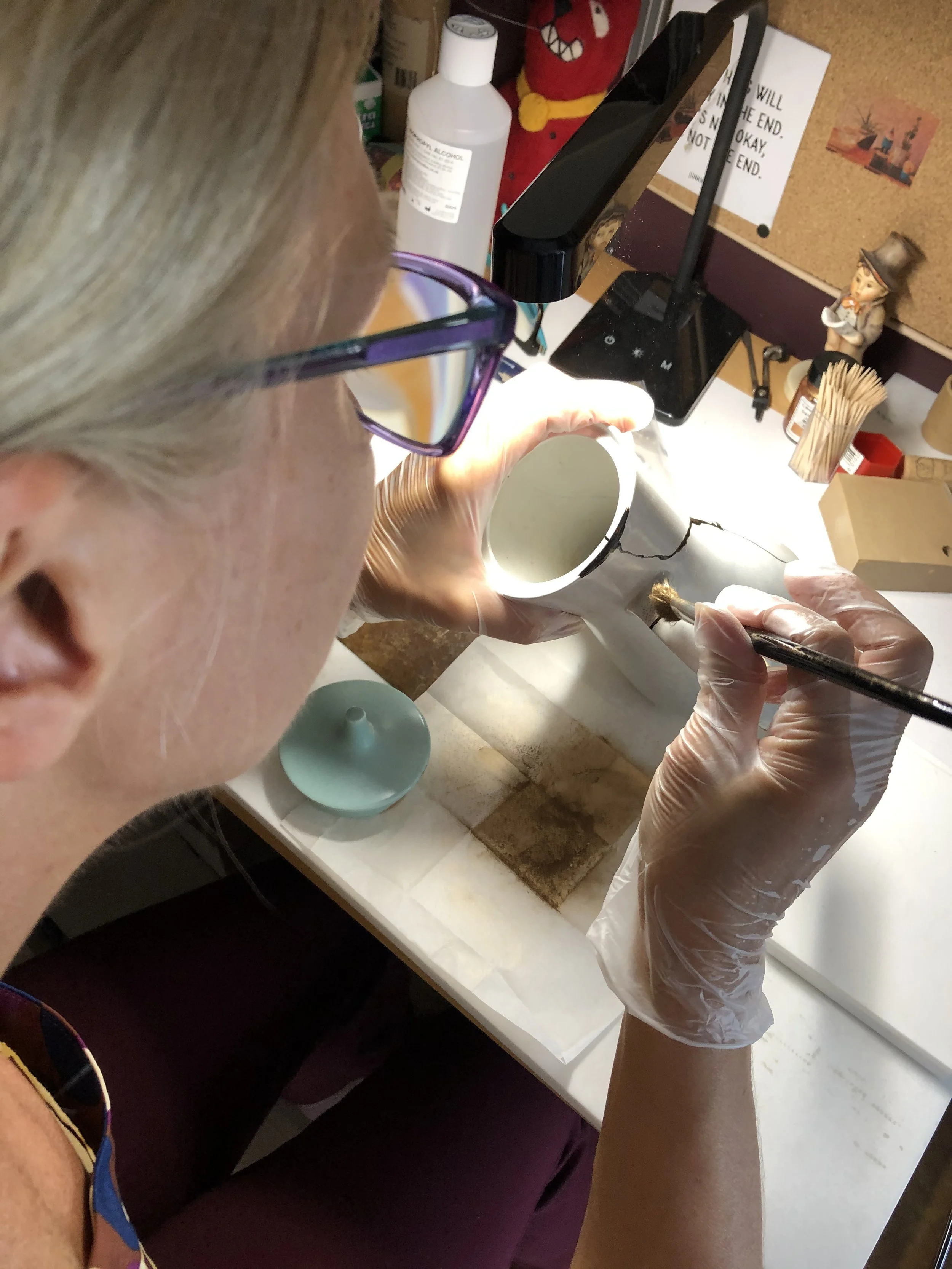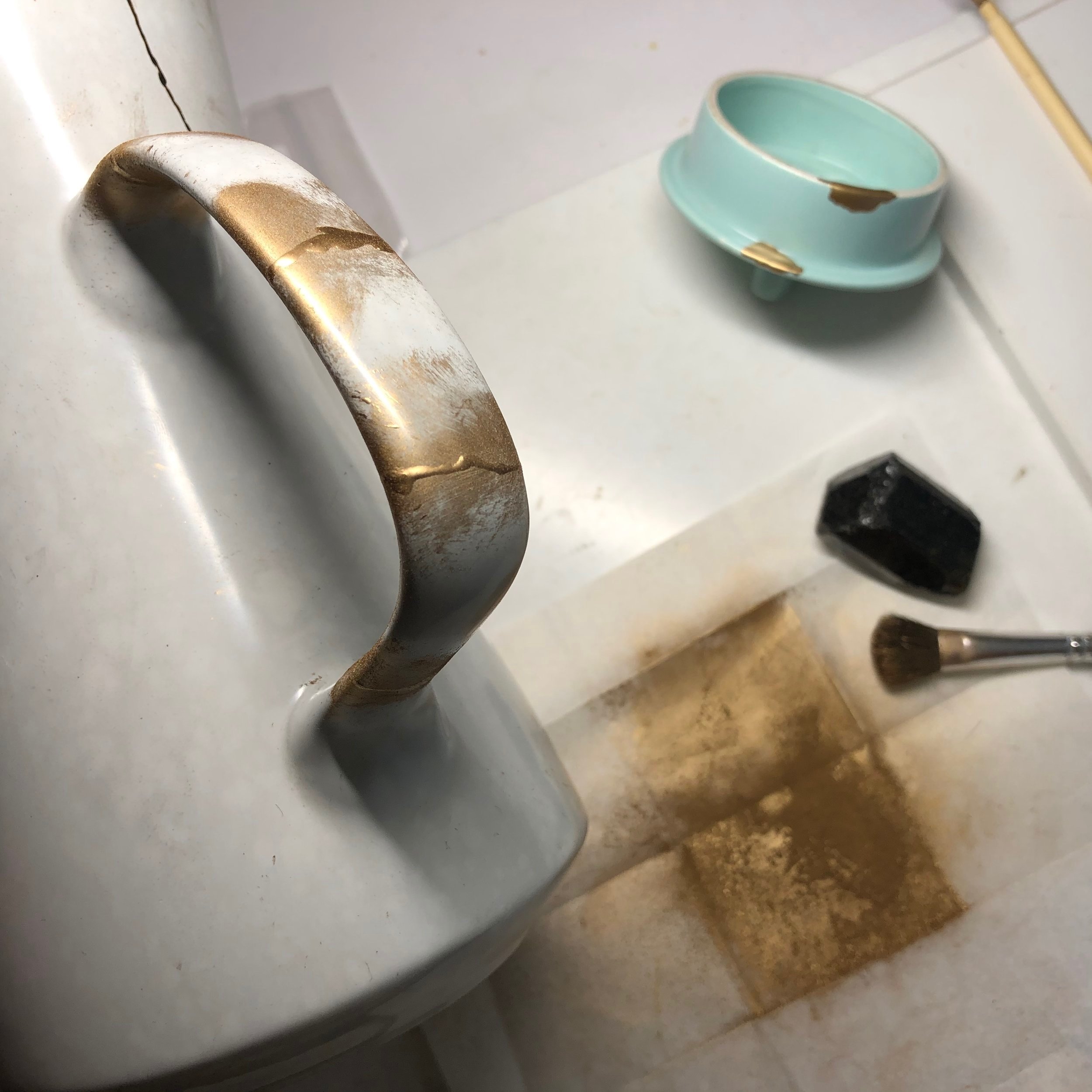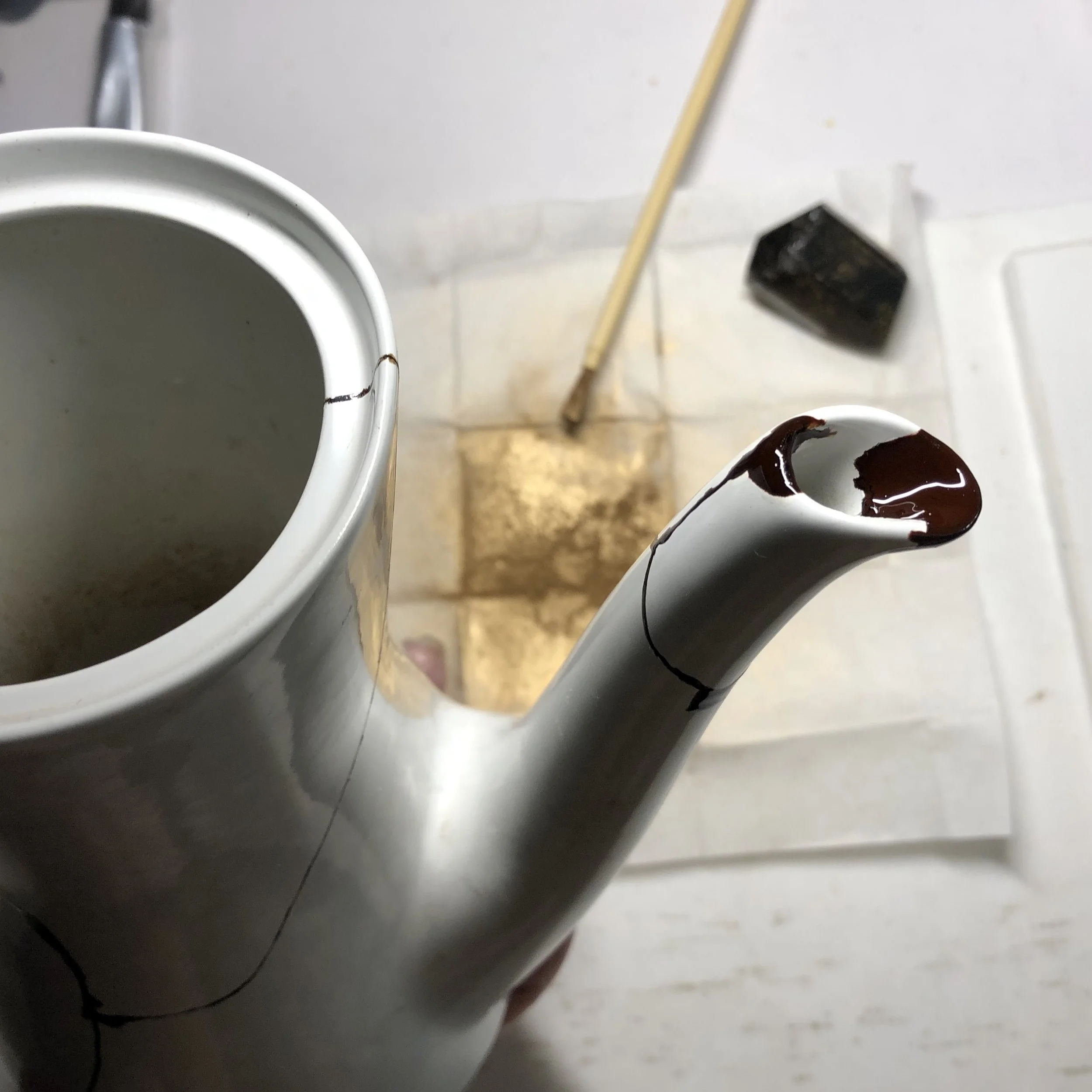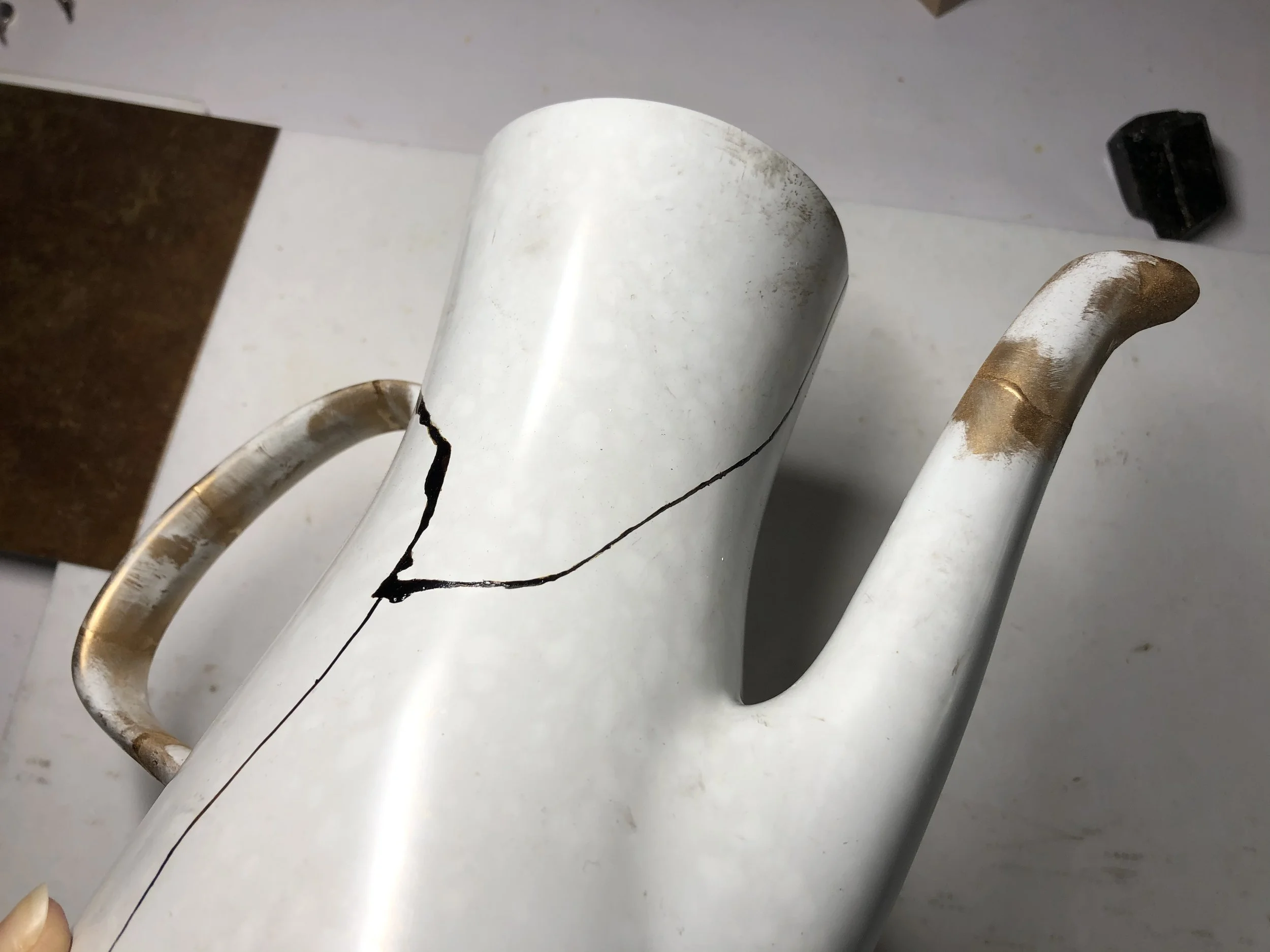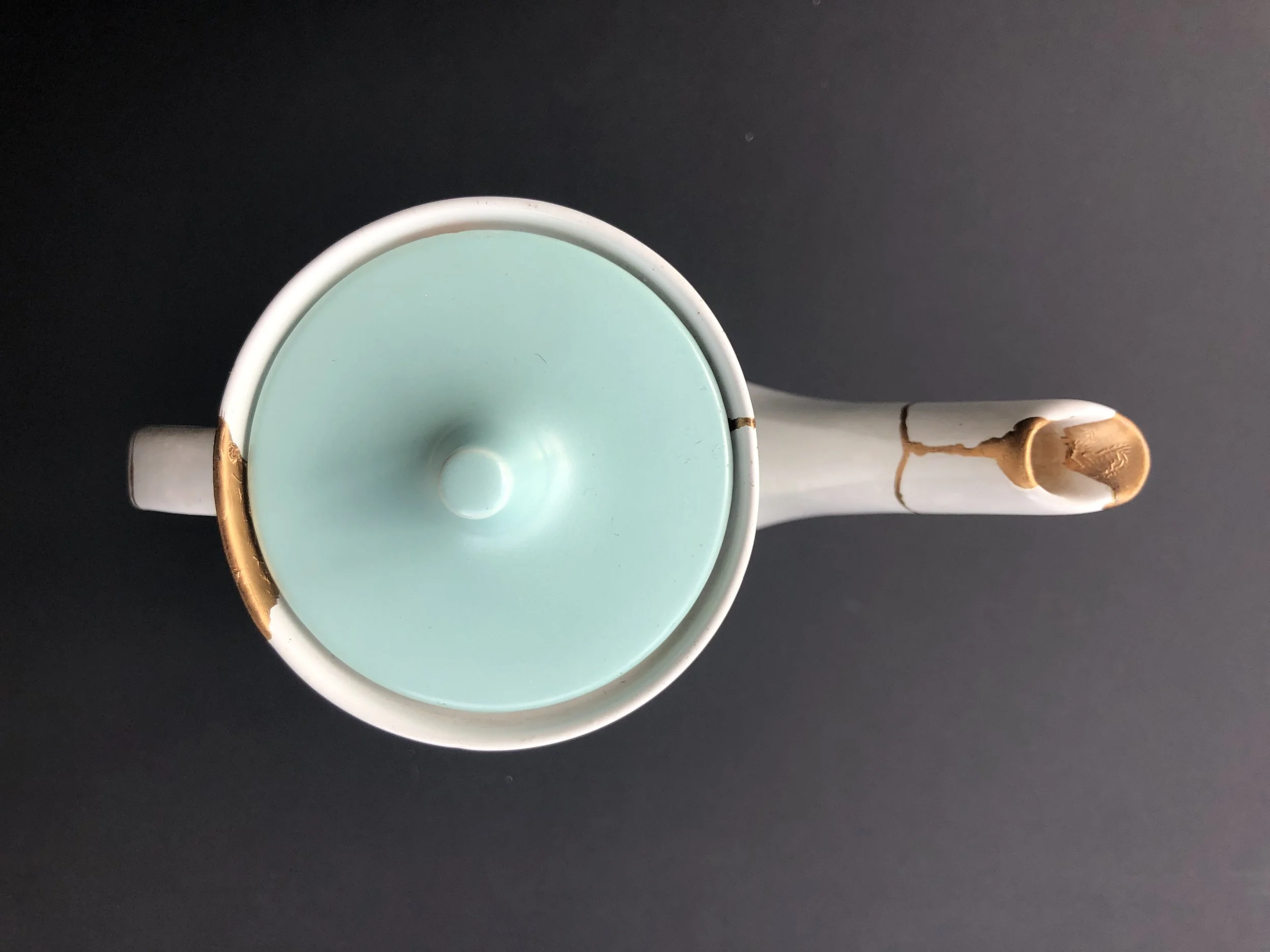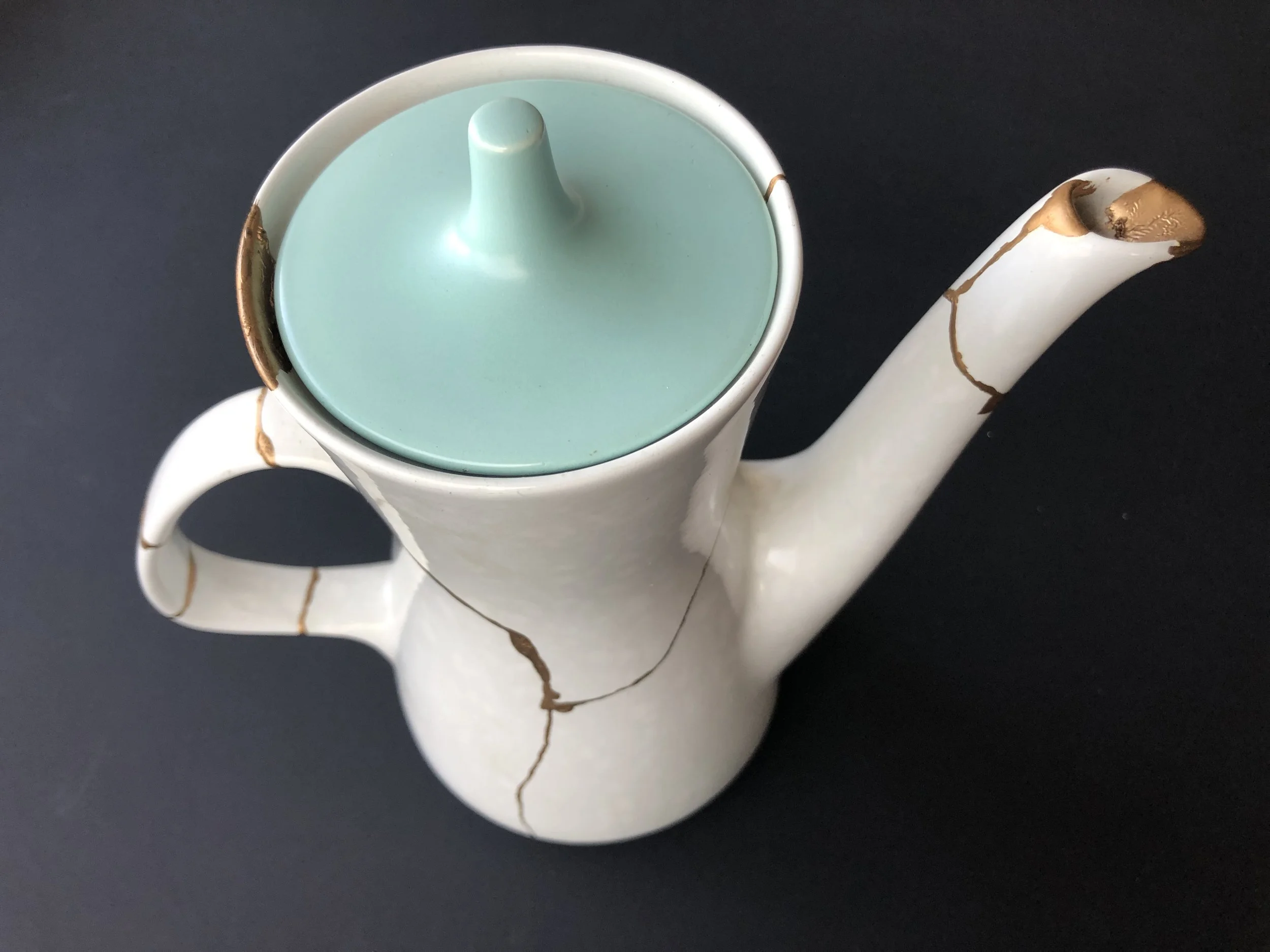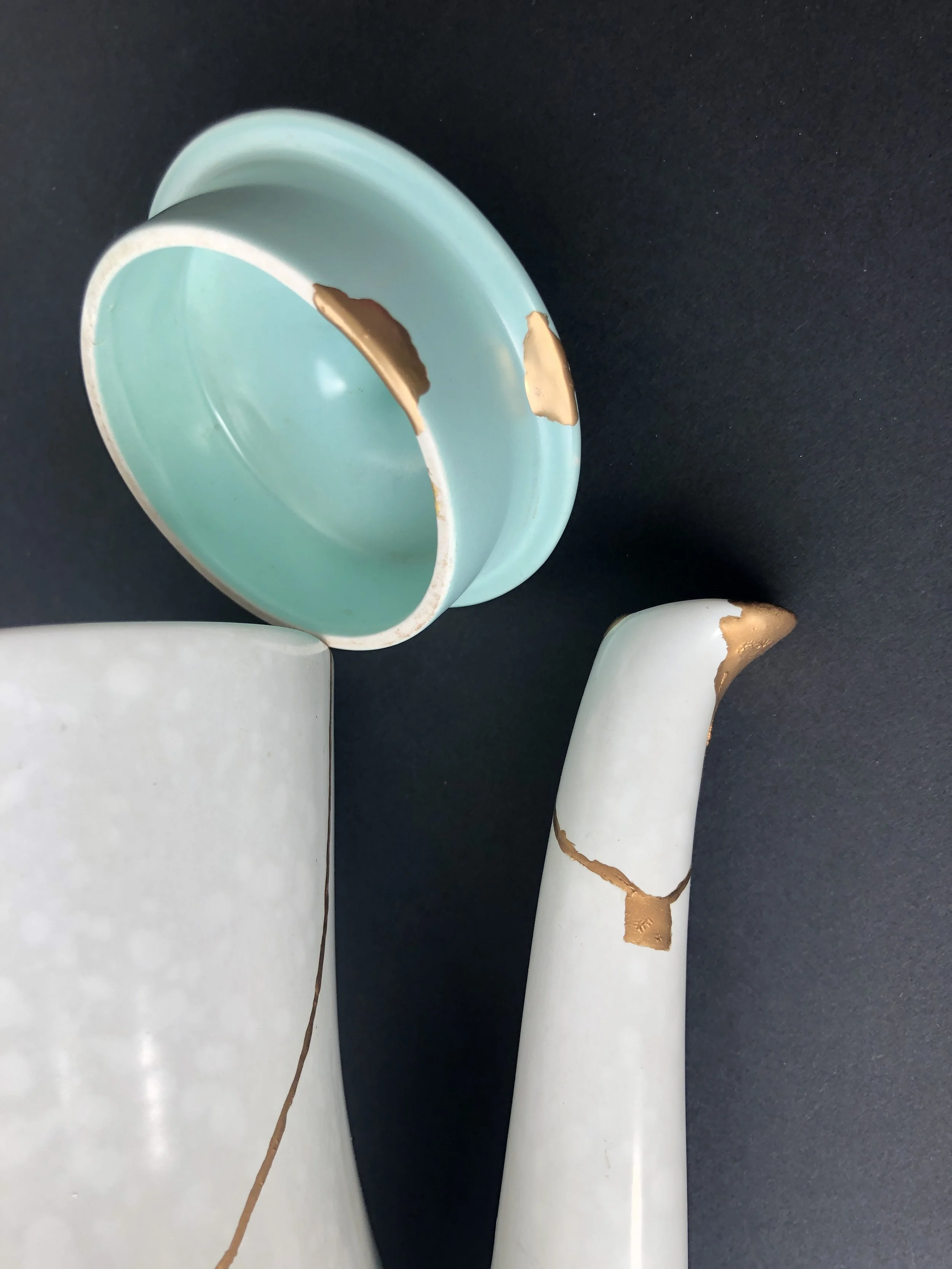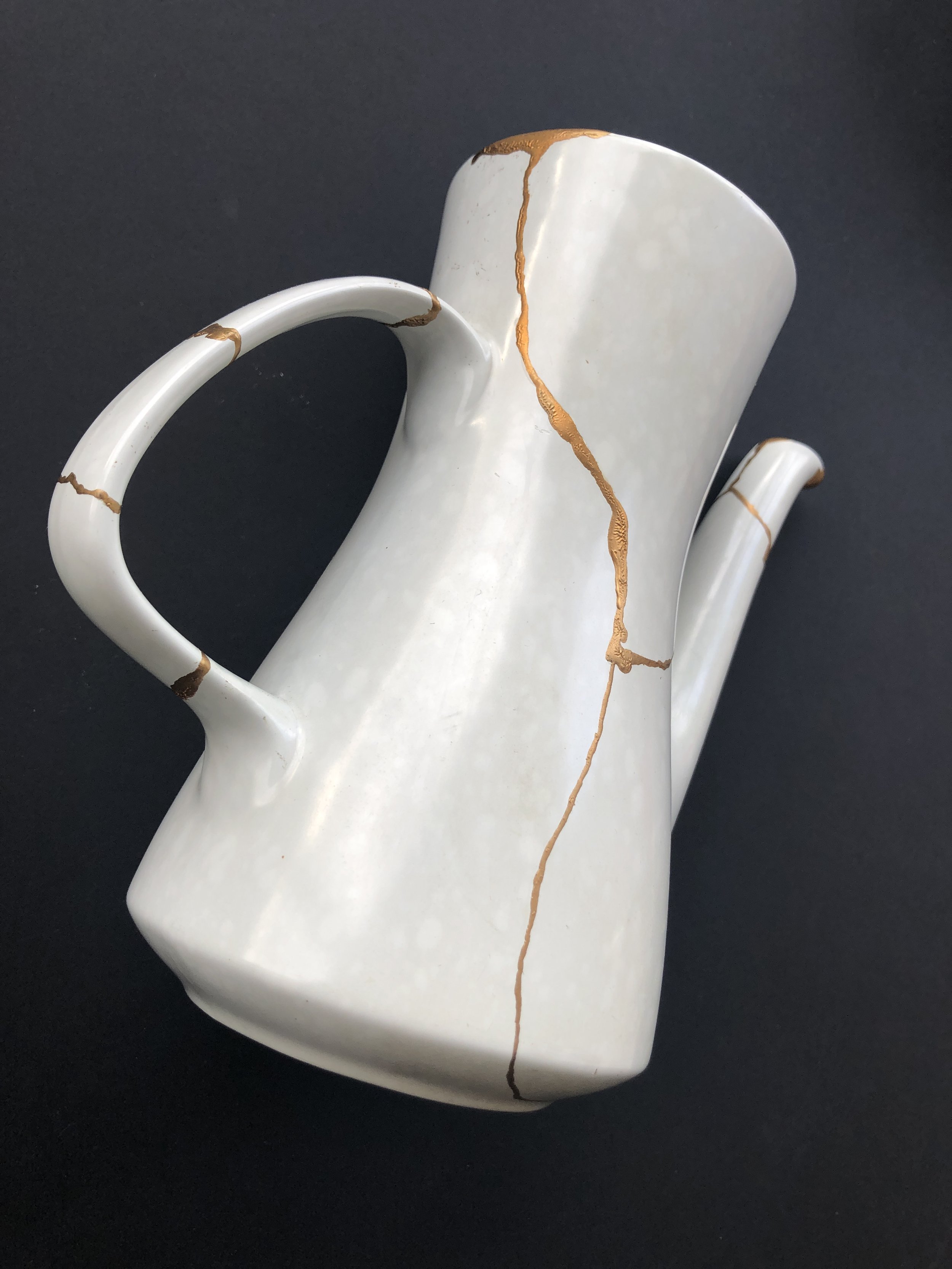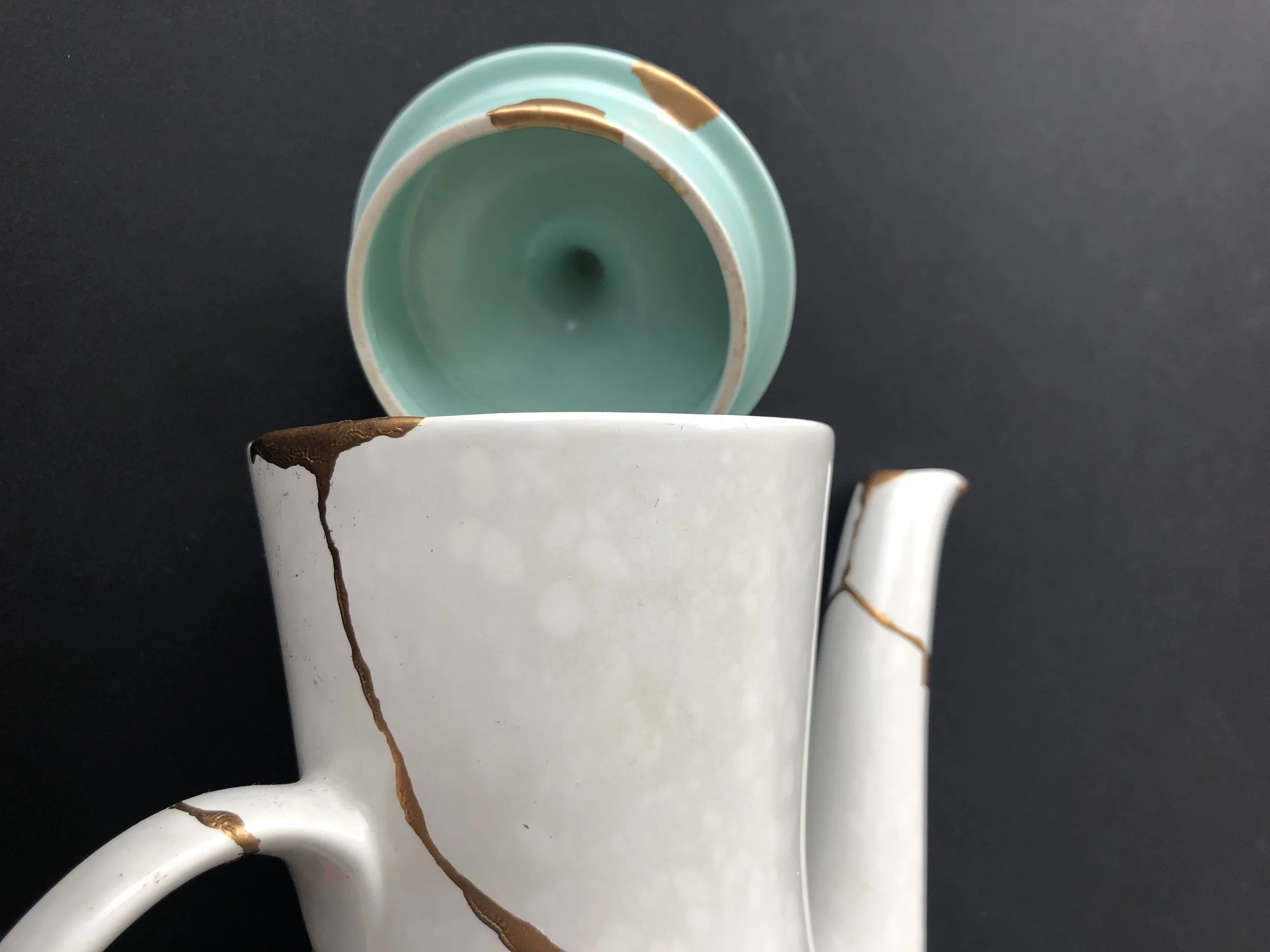Poole coffee/tea pot - Kintsugi repair
What do you do when one of your cats knocks your favourite coffee pot off the shelf and breaks it? The story behind one of my first Kintsugi projects.
We visited friends in York, shortly after they moved into their new house. There were still a few boxes lying around but my eye caught some broken pieces of pottery lying on the table. One of the cats had been running through the old house as they were packing up boxes and knocked the favourite pot that was sitting ready to be carefully boxed. Unable to part with the keepsake, the pieces and chipped lid were carefully packed and moved with the family, naughty cats and all.
I offered to take the pieces and see what I could do to repair it. I had only just started to teach myself Kintsugi repair and, at that point, I hadn’t begun practicing with traditional materials. But I knew that I could mend it, if nothing else, and that is what I did almost immediately, using the not-so-traditional kintsugi method of epoxy glue to put it back together. Then it sat mended and unembellished for months while I practiced working with urushi (Japanese lacquer) and metal powders on practice pieces until I was able to obtain a finish that I was satisfied with. In the heat of London lockdown I was ready to work my Kintsugi magic.
Still a beginner to this ancient craft, I didn’t get the consistency of the urushi and/or the humidity quite right - the urushi needs to cure in a humid box or damp room to polymerise (harden) - and the urushi ‘wrinkled’. I quite like the wrinkling in this piece though as it gives the golden seams and spout texture on an otherwise perfectly smooth pot.
After some time the lockdowns lifted and it was time to return the Poole pot back to its rightful owners. I had given it the name ‘Nekowaride’ Pot after a passage that I read in a book:
“I ask, ‘Why is it called Nekowaride?’
‘It is because it was broken by a cat years ago. You know ‘neko’ is cat; ‘wari’ is part of the word that means broken; and ‘de’ is ’te’ or hand. Perhaps there’s also a little hidden meaning. The sound ‘wari’ is close to ‘warui’, which means ‘bad’ or ’naughty’, like the cat was.”
Raku Fujiko in an interview with Bonnie Kemske in February 2019, (2021, p30), Kintsugi: The Poetic Mend
